Whenever I hear advertisers on TV ask for a pledge of “just $11 a month” for some great cause, I immediately think of the priest who pioneered that very fundraising strategy: Fr. Nelson Baker of Lackawanna, NY.
Fr. Baker (1842-1936) was one of those great old stalwart priests who stepped into a difficult situation and transformed it radically. He reminds me of the psalm that says,
“As they go through the Bitter Valley they make it a place of springs” (Ps 84:7).
This humble saint certainly made springs flow and graces flourish abundantly in Lackawanna.
A Transformational Leader
Before ordination, Fr. Baker volunteered for the New York Regiment and fought in the Civil War. Unbelievably, he survived the Battle of Gettysburg (1863) unscathed, despite more than 51,000 casualties.
After being discharged from the service he started his own successful feed and grain business in Buffalo with another veteran. In other words, he was tough as nails and experienced in the ways of the world.
In 1872 he was assigned as superintendent of an orphanage in Western New York and quickly realized he didn’t have enough money to pay the mortgage. He immediately emptied his own bank accounts to hold off the creditors and then went begging.
Pioneer of Direct Marketing
The ingenious fundraising technique he invented was not called Direct Marketing at the time, but it operated on the same principles as the modern day telemarketers.
He had no mailing list, but that didn’t stop him from writing to postmasters across the country asking for names and addresses of Catholics to whom he could make appeal. Today, he (and the postmasters) would be in court in a matter of days!
When he got his lists, he began sending letters to Catholics across the country asking them to donate “just 25 cents a year” to his orphanage—not 25 cents a month, mind you, but a single quarter per year!
Not only did he quickly pay off the mortgage and all other debts, but according to the history on the website:
By the turn of the century, the number of children receiving care at the Institutions had more than tripled, and the Orphanage and Protectory [for young boys] were expanded. In 1908, the Infant Home was added, followed by a Maternity and General Hospital. In 1926, the glorious Our Lady of Victory National Shrine and Basilica was finished and dedicated, the crowning jewel of Father Baker's "City of Charity." (Our Lady of Victory website)
When he finally built his Basilica, he was receiving 25-cent donations from every state in the country. I’d say Fr. Baker had the ingenuity and resolve of the greatest priest saints.
The Angelic Basilica
In 1921 Fr. Baker presented his stunned parish council with his plans to build a basilica that would rival the great churches of Europe. His vision quickly lit a fire under the whole local community.
He decided to call it Our Lady of Victory, who was his patroness. He attributed all his successes to her. The church cornerstone was laid in 1921, and after just four years, the parish community celebrated their first official Mass in the new basilica on Christmas of 1925. The bishop consecrated the church a few months later.
(Did I mention the parish was debt-free when they opened the doors? But you could have guessed that! I’m told that the bishop was happy.)
The reason why I call it angelic is that Fr. Baker wanted all visitors to be able to see an angel from any place in the basilica. All told, from statues to oil paintings to mosaics and tiles, somewhere around 2,000 angels decorate the basilica. Father believed that angels help humans to worship more devoutly. So true!
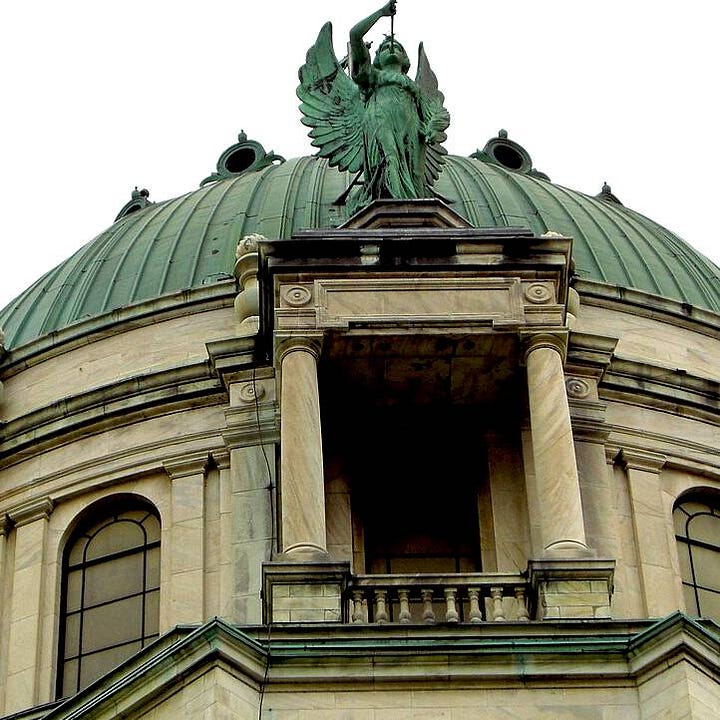
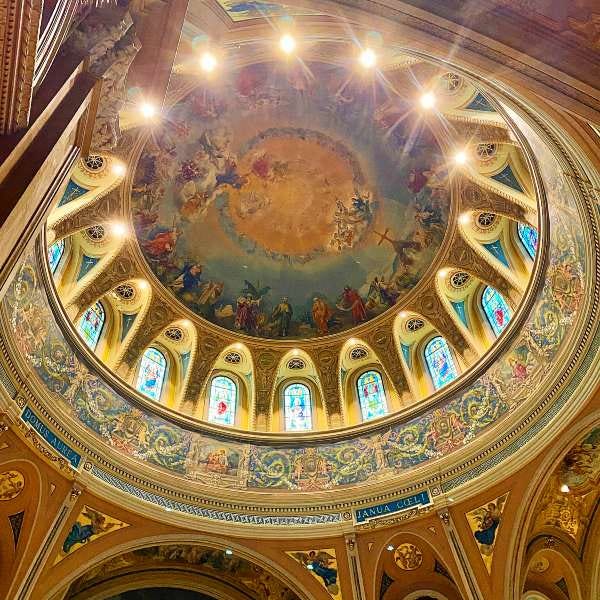
A Catholic Masterpiece
If you even wonder why the Catholic Church has never endorsed the DEI fad of our weird secular culture, it’s because the Church long ago settled the diversity and inclusion thing and did so without any ideological posturing. You can get a view of it by the crew that Fr. Baker assembled to build his basilica.
A French architect (Emile Ulrich)
An Italian master artist (Gonippo Raggi)
A Polish sculptor (Marion Rzeznik), and
A German stained glass artisan (Otto Andrle).
These men built what can be called a Renaissance Revival-style Basilica similar to so many beautiful churches in Italy. Needless to say, nothing could have been built without the vision of an American pioneer priest and the generosity of thousands of American donors.
Highlights
The main features of the basilica show it to be a wonder of architecture and grace:
A 120-foot tall dome that spans 80 feet in diameter
Twin towers that rise 165 feet in the air
More than 40 different types and styles of Italian marble
A 54-rank world class organ with 18-foot pipes
A ceiling decorated with five huge murals depicting the life of Our Lady
Life-sized Stations of the Cross and even
A small shrine dedicated to Our Lady of Lourdes, hewn out of black lava rock from Mt. Vesuvius!

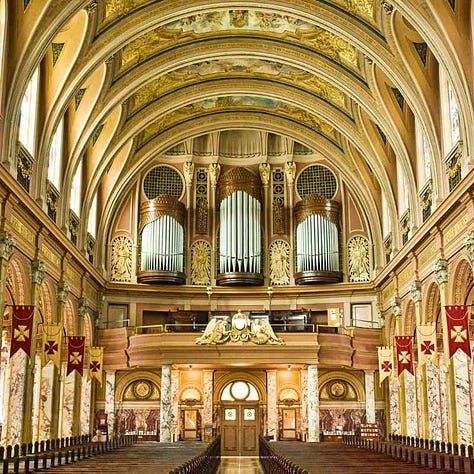
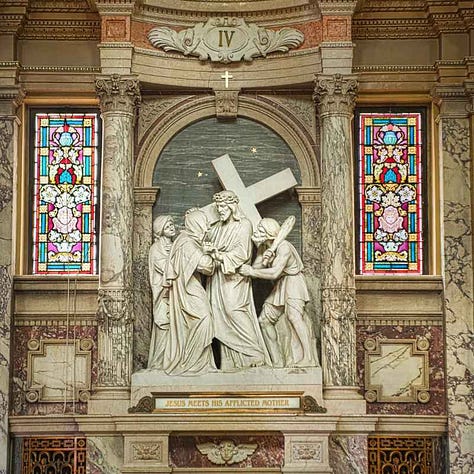
Its Most Touching Scene
On a visit to this basilica some years ago I couldn’t get over the number of angels. In some cases you have to look for them, but in other places they make their presence felt.
That was the case when I exited the front door of the basilica and started to walk to my car. I happened to glance back and was immediately stopped in my tracks. There, on top of one of the colonnades flanking the front door was this amazing statue.
It’s a glorious angel overshadowing Fr. Baker, who is surrounded by all the orphans to whom he had so generously given a new lease on life in the many institutions he founded. There is a similar angel statue with a teaching Sister of St. Joseph balancing this one on the other side of the entrance.
The only things more inspiring than this work of art are the souls that Father formed and influenced in his years of serving needy children. Those souls are the true works of art.
In 1986, the Diocese of Buffalo opened the cause for his canonization. And when Father’s grave was translated from the cemetery to the church in 1999, six grown-up men who had been orphans in his schools carried his coffin back into the church where their beloved father would be laid to rest under the Dome (and mantle) of Our Lady of Victory.
“Victory” in religion cannot be better expressed than that.
—
Basilica Website: https://www.olvbasilica.org/
Fascinating virtual “tour” of the basilica: https://www.olvbasilica.org/3d-experience
—
Fr. Baker (public domain); Basilica Exterior (Elizabeth Duggan); Great Dome, Dome angel and Engraving (Dweeebis); Panoramic View and Dome (w_lemay); Angel with Children (Basilica website).





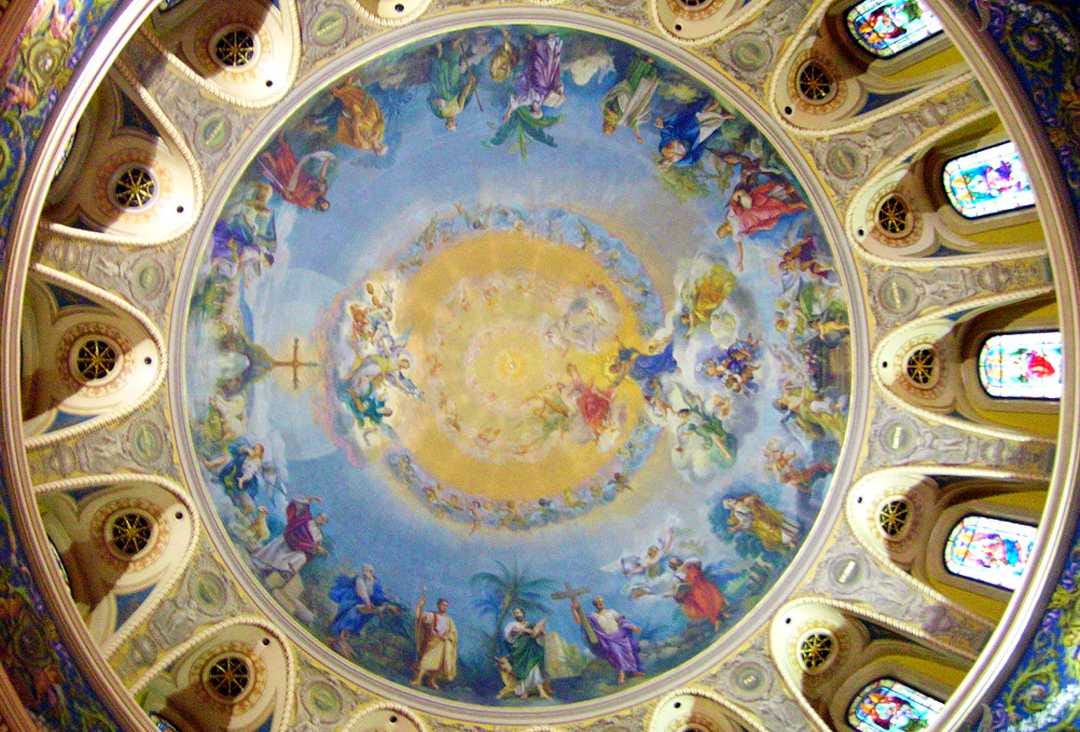
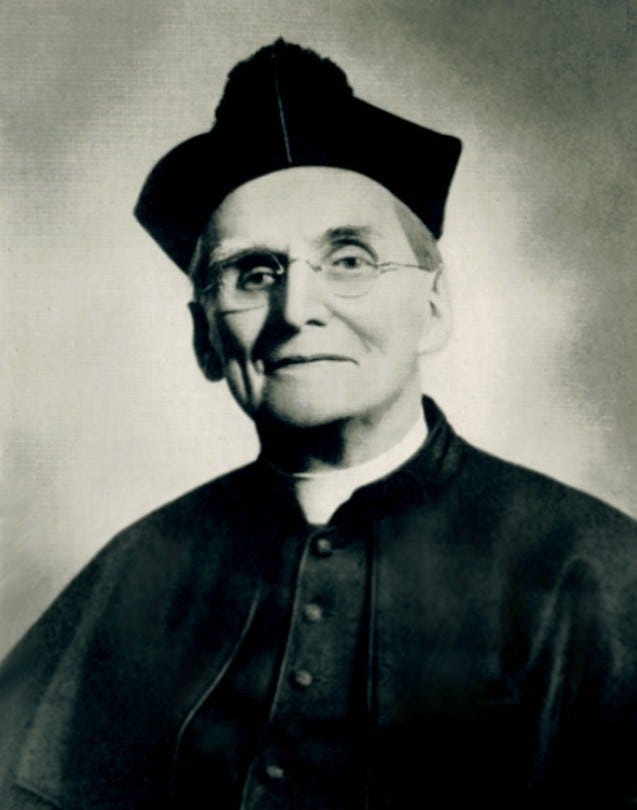
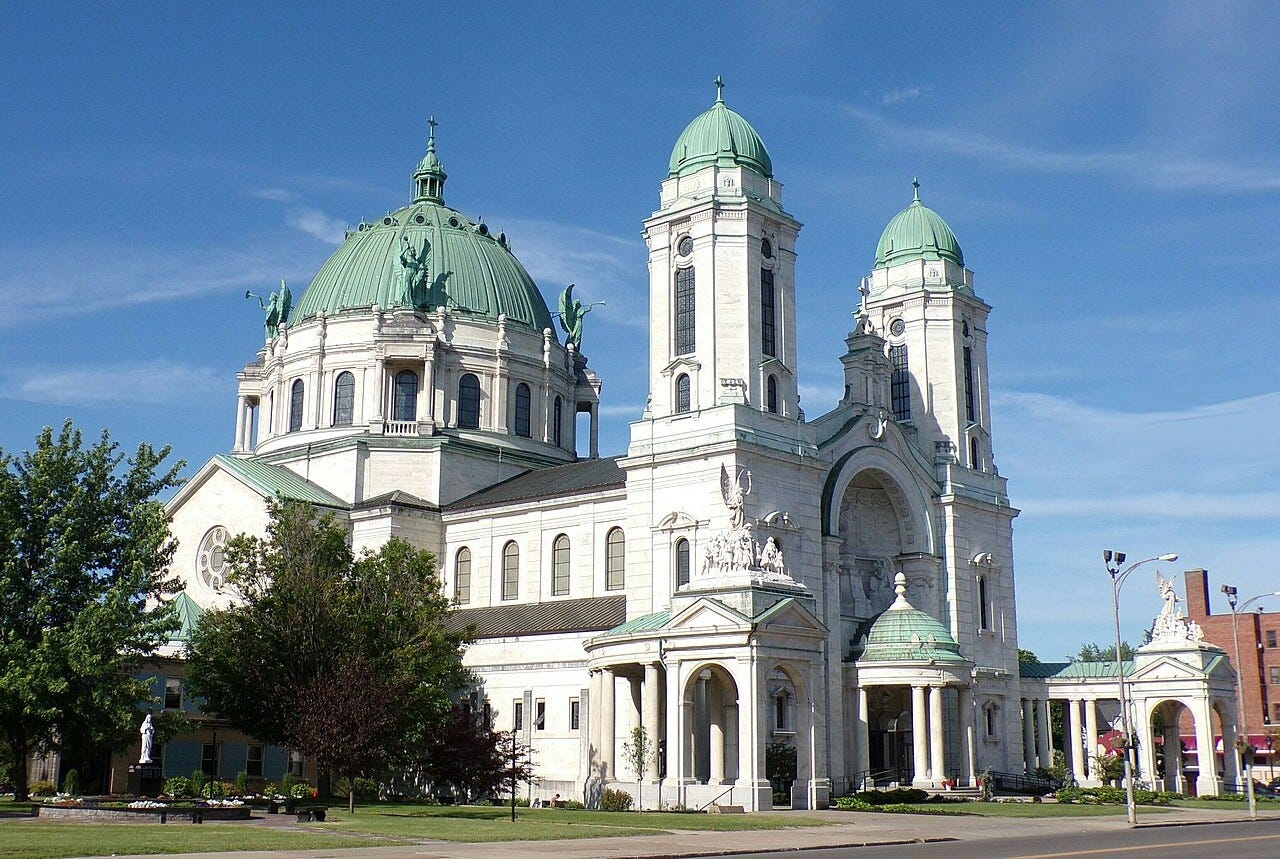

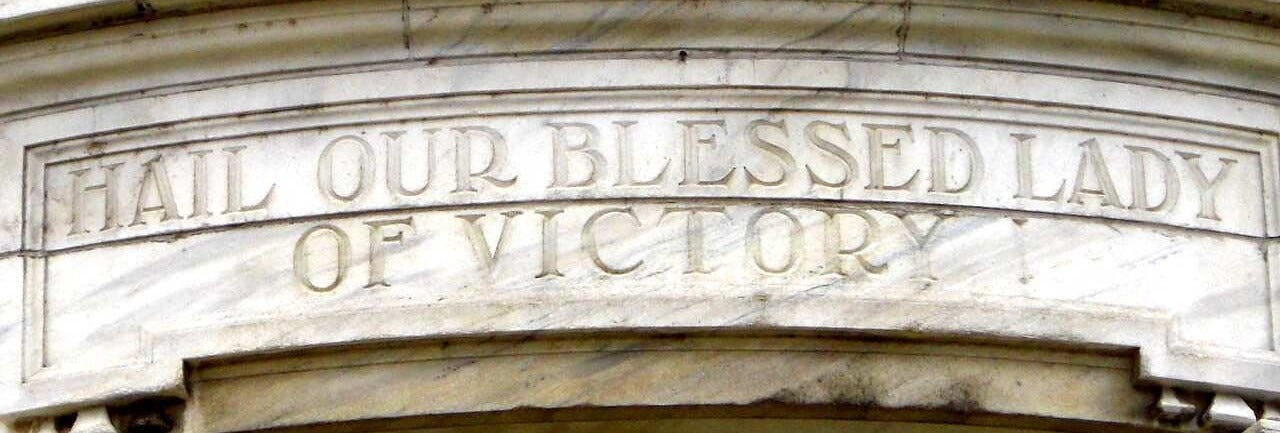
Incredibly beautiful .
What a beautiful tribute. I particularly liked the reasoning for why DEI isn’t needed.